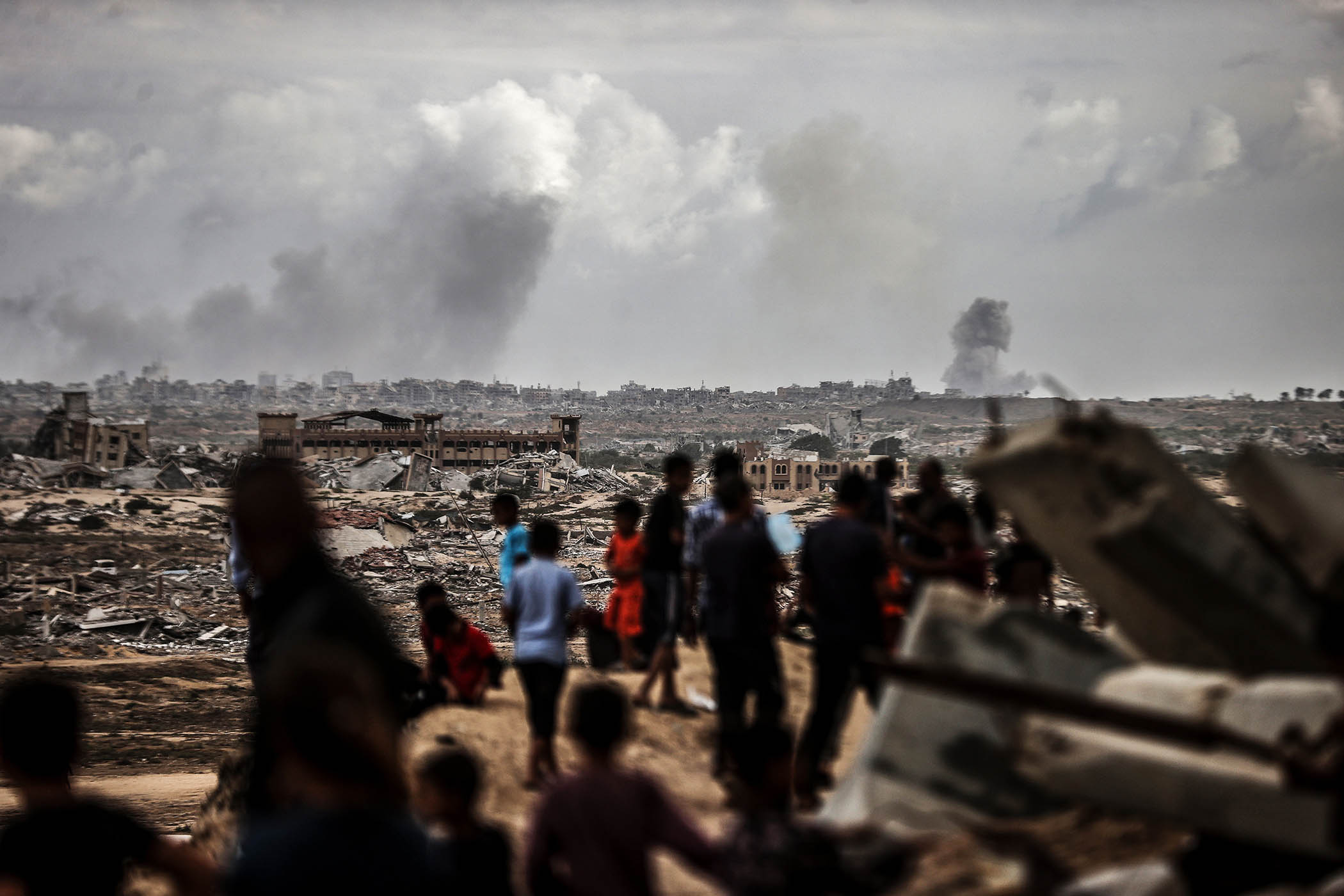Some two hours after a ceasefire came into effect in the battered, besieged Gaza Strip, many of us watched – live on air – Israeli tanks bombing Palestinians near al-Rashid Street, the last open route for residents of southern Gaza to reach the northern part of the coastal enclave.
The scenes of dozens of people fleeing for their lives as smoke billowed amid a wasteland of rubble, caught by an Al Jazeera camera, were a horrific reminder of past ceasefire agreements broken by Israel. The last of these being on 18 March, when it struck Gaza, killing hundreds of Palestinians even after it violated the terms by hindering and limiting entry of aid to the famine-struck population.
Time will tell whether this ceasefire represents real change or if it is merely a tactical performance –another extension of war by other means. It seems more likely Israel will use this pause to bring itself some respite from the continuing global outrage and pressure, and redirect attention, only to continue its actions once international focus fades.
This is why the Palestinian struggle has never been solely about stopping atrocities; it is, at its core, a fight for liberation. For many, this moment is not one for complacency, but for continuing the work that Palestinians in Gaza, the West Bank, and in the diaspora, as well as supporters all around the world, started years ago.
Flotillas must continue to sail to break the draconian siege imposed on Gaza since 2007. Students must resume their sit-ins at universities and colleges. Journalists must persist in demanding access to Gaza to cover war crimes. Demonstrators must carry on with flooding the streets.
These individual and group acts of resistance are part of what forced US President Donald Trump’s hand.He didn’t act on principle – he was cornered. A worldwide protest movement for Gaza had driven Israel into unprecedented isolation and left Washington diplomatically stranded.
Mounting public fury, combined with warnings from Arab governments fearful of domestic unrest amid Israel’s escalating violence, created unbearable pressure – especially after last month’s strike on Doha, the Qatari capital, intensified regional outrage.
Together, these pressures forced an outcome that could no longer be postponed: the genocide had to stop, at least temporarily, before Israel’s isolation became total and the region’s balance of power was reshaped beyond repair.
Gaza’s children can and should celebrate the end of one of the cruelest recorded genocides in recent history. They can sleep without the agonising hum of Israel’s drones bleeding into their ears, without the fear of being bombed in their decrepit tents. They may actually dream of a better future, despite the odds.
Israel’s campaign has failed. It did not depopulate Gaza, nor did it destroy the Palestinian cause. Nearly every military and political objective set by the Israeli prime minister, Benjamin Netanyahu, has collapsed.
On the ground, Israel faces a strategic defeat – though it mistakes devastation for victory, counting ruins and casualties as its only metrics of success. Unable to prevail through force, Israel will now attempt to secure by diplomacy and coercion what it could not achieve through one of the most destructive wars of our generation.
Dalia Hatuqa is an independent journalist specialising in Palestinian-Israeli affairs
Photograph by Ali Jadallah/Anadolu via Getty Images
